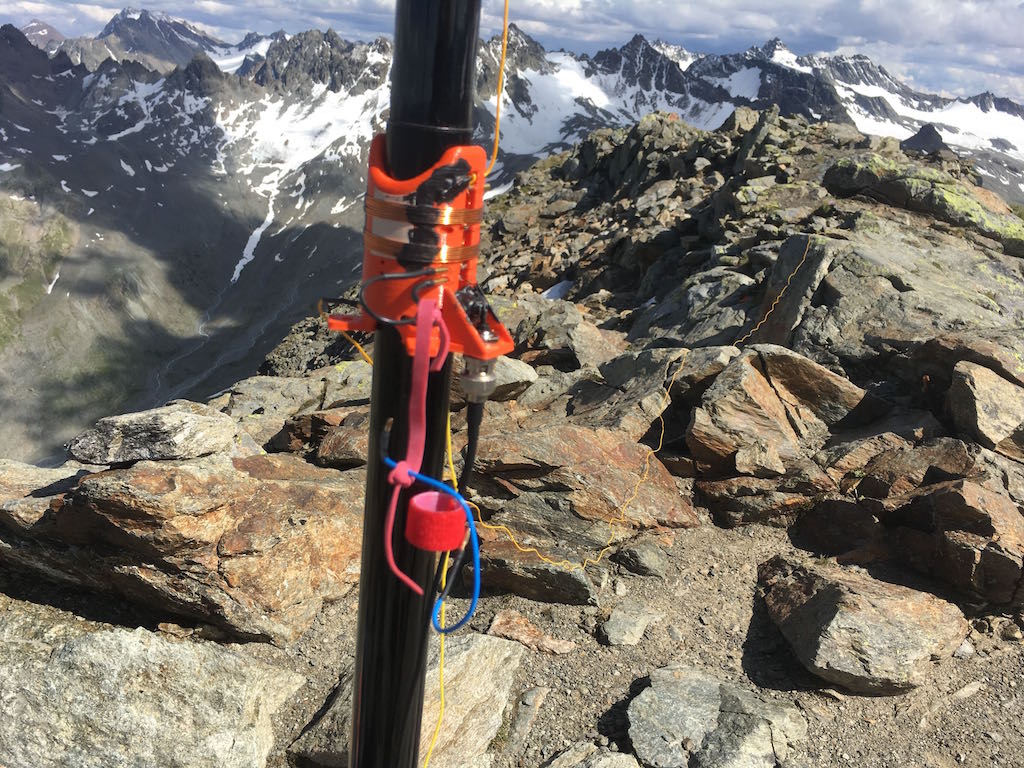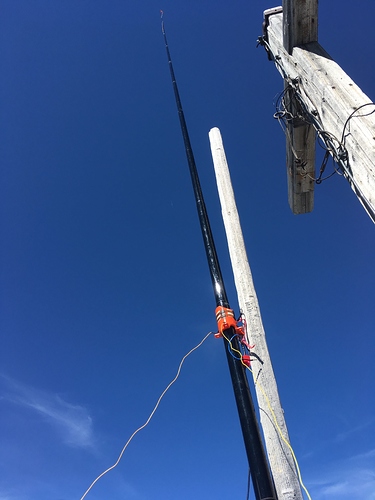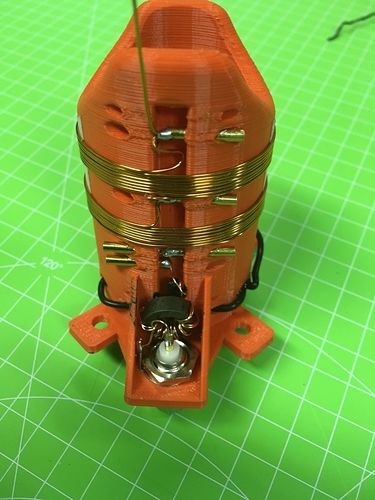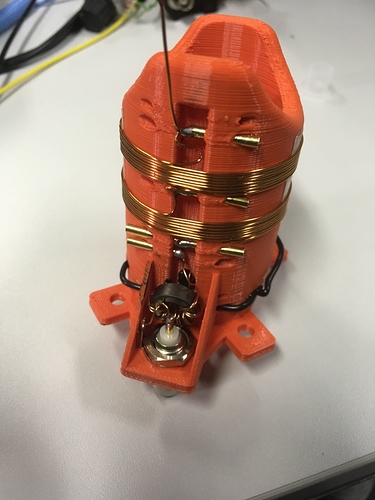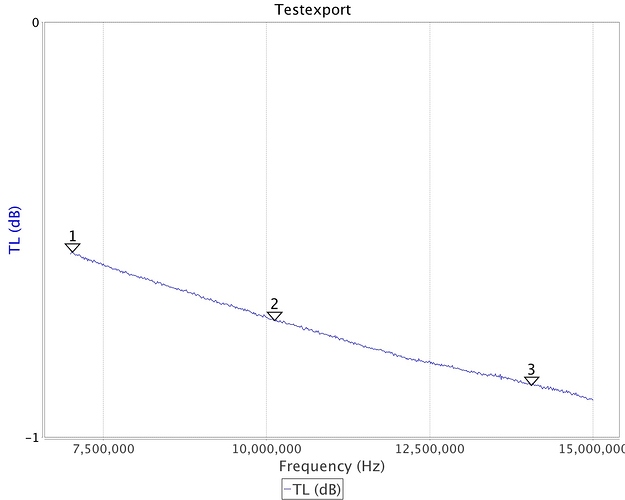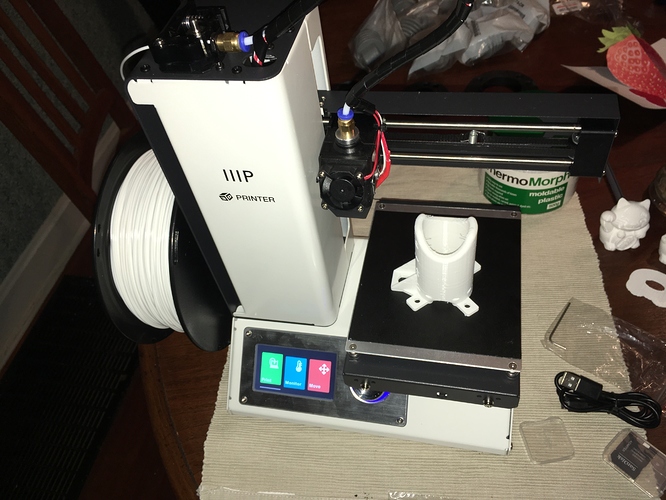Hi,
I had promised to provide more details on my most recent antenna project for SOTA, which is a three-band vertical with a loading coil at the base.
Background: I am a happy user of the 3-band EFHW with traps designed by Heinz, HB9BCB, but on some summits, the ca. 16 m of wire are difficult to deploy. On crowded summits (like skitouring in winter), you risk to annoy people by an inverted vee of that size right on the summit (and they might even take down parts of your antenna without asking). On a small summit, it can be difficult to actually get to the ends of the inverted vee.
Approach: I wanted to try a vertical that is more compact than the EFHW, yet way more efficient than e.g. an ATX1080 or Miracle Whip.
So I decided to take
- a Lambdahalbe 6m mast and
- a taped loading coil at the base, which also serves as a guying kit.
The coil is put ON the mast (which shoud be GfK in this case in order to avoid stray capacitance).
One to three radials are tuned to length and the excess wire is wound up on SotaBeams mini winders.
Here are a few pictures of the solution. So far, it worked pretty well. I will publish the files for 3D printing on Thingiverse soon.
Band change is relatively easy: You get in the radial or radials and unwind/wind the wire to the respective length (and fix it with rubber band), and you change position of 2mm plugs that shorten unneeded parts of the loading coil.
Basically, the whole antenna is a giant ATX1080, with the difference that the radiator is ca 5m long instead of 127 cm (or even shorter) in the case of the ATX1080.
The loading coil is from 0.63 mm enamel wire. For 20m, you need 0 - 2 turns, for 30m ca. 8 and for 40 m ca. 16 turns on the 3D-printed coil body from PLA.
I also included a small balun (FT50-43 + 11 turns of twisted enamel wire) in order to block problems resulting from suboptimal radials deployment.
I know that a loading coil towards the middle of the radiator would be more efficient, but in this case, I started what is physically feasible and good from the perspective of handling, and learn how far I would get.
The antenna is 227 g including a bag, and the coil body also serves as a wire winder.
73 de Martin, DK3IT
